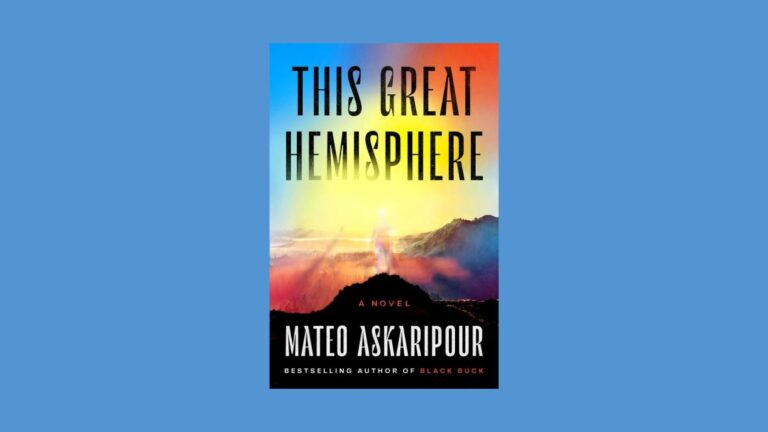
Mateo Askaripour’s second novel This great hemisphere It’s an epic fantasy novel that tackles the enduring power struggles of racism, classism, and politics, but it’s also a heartwarming story about a young woman learning to navigate the world.
Sweetmint is an invisible young woman who lives somewhat isolated from the rest of her community in the relatively quiet Forest 26. She has done well in everything she has done in life and is now interviewing to become an apprentice to Kroger Tenmase, known as the “Chief Architect”, the savior of the Northwestern Hemisphere and a leading inventor. Once she is accepted, her life will change forever.

Unfortunately, this change doesn’t last long. Sweetmint’s beloved brother, who mysteriously disappeared several years ago, is not only rumored to be alive, but also suspected of murdering the Northwestern Hemisphere’s top executive. With authorities searching for his brother, Sweetmint must use her wits to find him first. Meanwhile, the Hemisphere’s elections are just around the corner, and those involved are willing to do whatever it takes to get the power they desire.
This great hemisphere is a complex, epic novel, packed with too many elements to discuss here. Askaripour has a powerful imagination, and it is on full display. In addition to the stark differences between the “Invisibles” and the DP (the “dominant population”), the author provides a rich description of strange worlds and technologies, bizarre rituals, places, objects, and events. More importantly, Askaripour uses the Invisibles and the DP to explore otherness and racism in interesting ways. That the story is about these topics is clear early on, from the prologue that begins the story (which takes place in New York City in 2028, then jumps to 2529), where a white woman harasses a pregnant black homeless woman in order to “save her poor black child™ from her neglectful black mother™”. For the rest of the story, the invisible are second-class citizens, not given the same jobs and opportunities, and are referred to as “visors” by the DP. Apart from superficial social criticism, Askaripour shows how hatred, misunderstanding and the vilification that usually accompanies them are so deeply rooted in society that even approaching extinction will not make people better at one another.

meanwhile This great hemisphere Askaripour’s novel is rich, multi-layered and at times dizzying, but it is not without its flaws. Perhaps the biggest is that the author spends many pages on the rituals of painting and politics, without ever delving into language, the great changes the world has undergone or how the invisible man came about. The novel is an intriguing mix of speculative elements, from science fiction to fantasy, meaning a worldview is essential, and in that respect Askaripour certainly delivers. But the story is also a twisty political thriller with elements of crime and mystery, genres that call for a faster, tighter pace that the novel fails to deliver.
The second year curse is not an issue for Askaripour. Sweetmint is a memorable character, the world the author has created for this novel is impressive, and the social critiques are sprinkled in in a way that achieves its purpose without coming across as preachy or overpowering the other elements that make up the story. Also, some of what the author brings to the page is unique, and you can see that he has paid a lot of attention to the details as well as the inner lives of his characters. For example, Lumoya, “the life force that flows through all invisible beings, unique to each one, influencing thoughts, feelings, and actions,” is so important that she appears as another character in the novel, an omnipresent presence that sometimes acts like a soul, and sometimes like a sixth sense or inner voice. Small details like that sprinkled throughout the story show that Askaripour is a voice to watch.

This great hemisphere The work is voluminous in many ways, which is a good thing, but it is clear that some of the important details that hold this world together have been lost somewhere between Askaripour’s gifted imagination and the pages. The novel is at times moving, at times intensely engaging, and at times a bit disjointed and sluggish, which creates an intriguing reading experience where some passages grab you and others just leave you wanting more. Despite these shortcomings, the strength of the novel and the clarity of its message make it a worthwhile read, especially for those who enjoy complex world-building.
Gabino Iglesias is a writer, book reviewer, and professor living in Austin, Texas. Find him on X (formerly Twitter). Gabino Iglesias.

